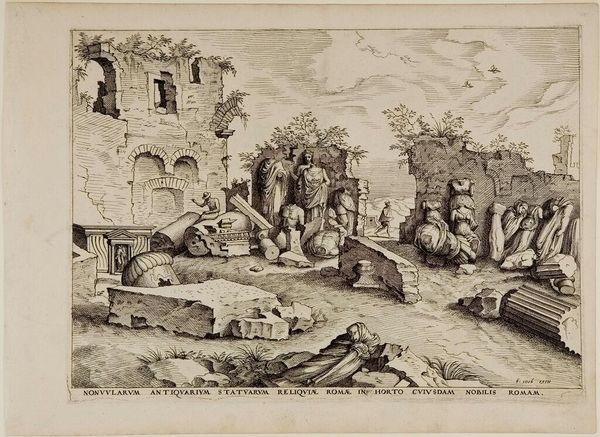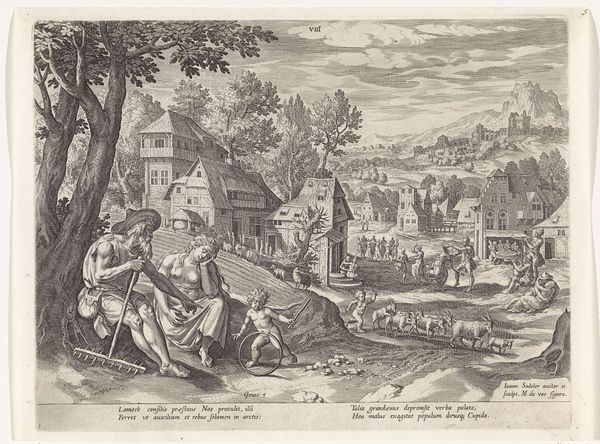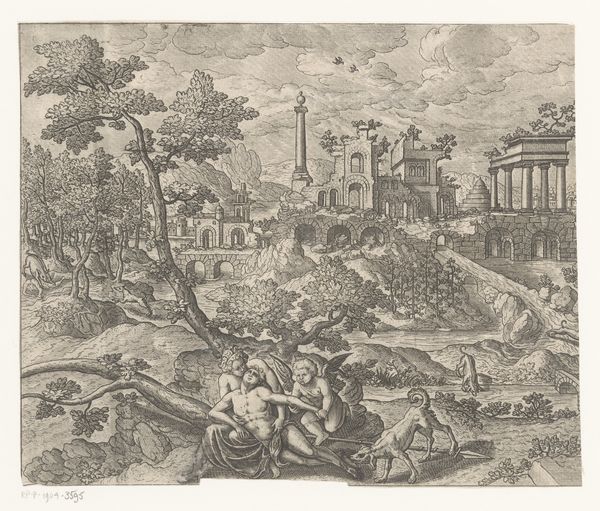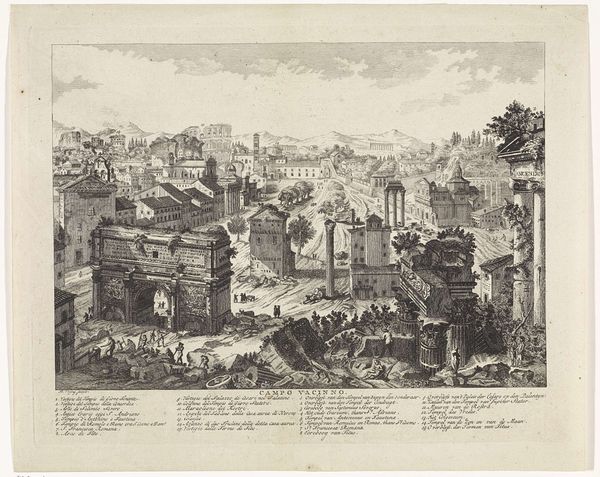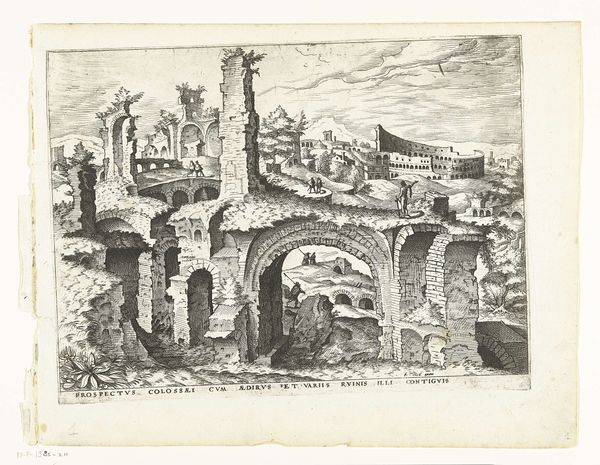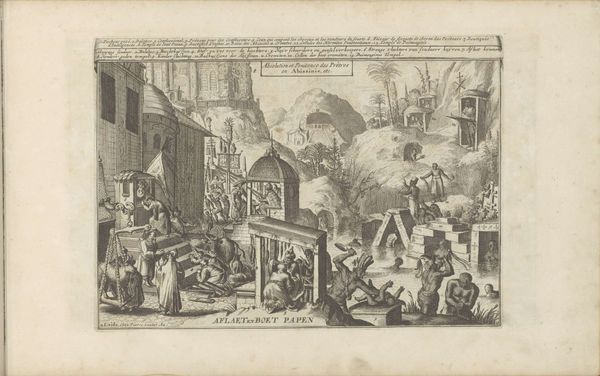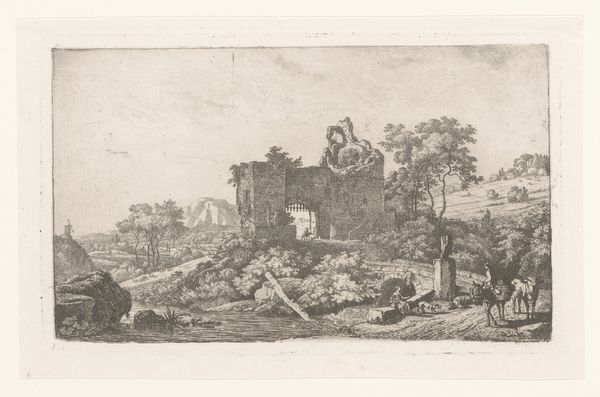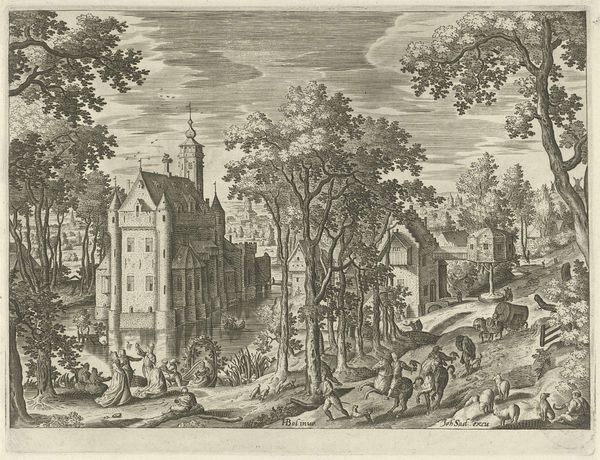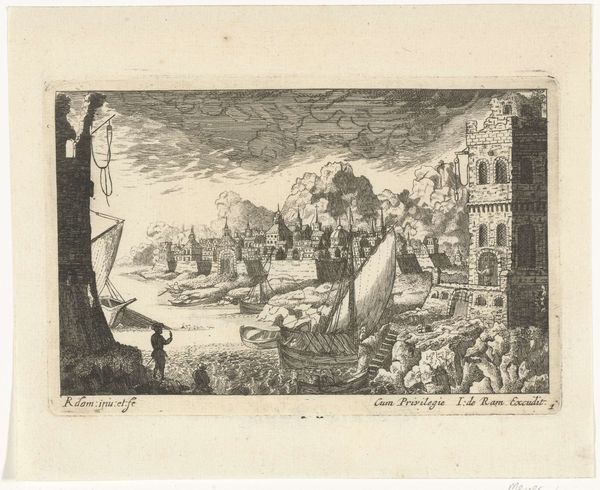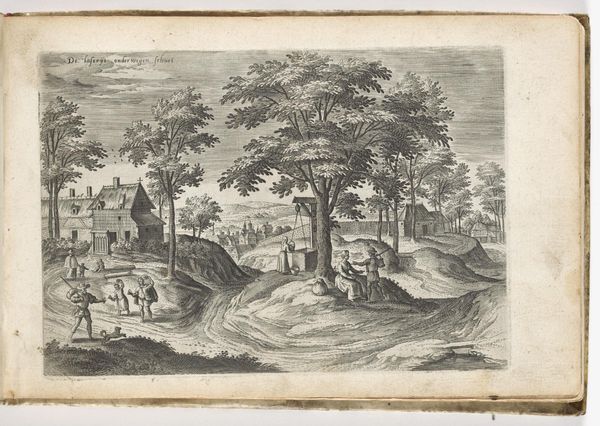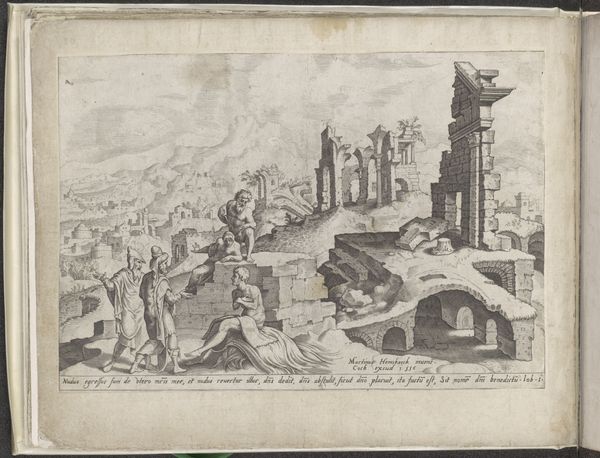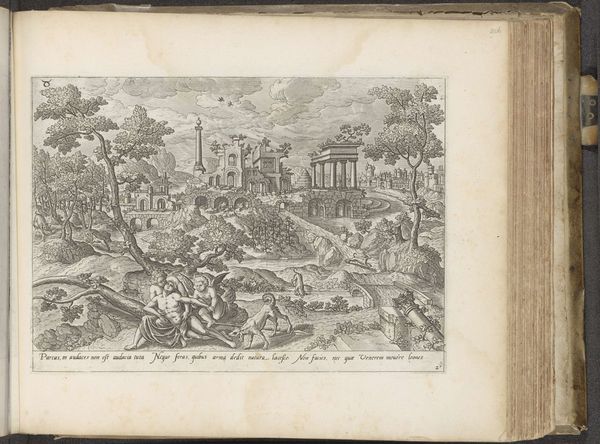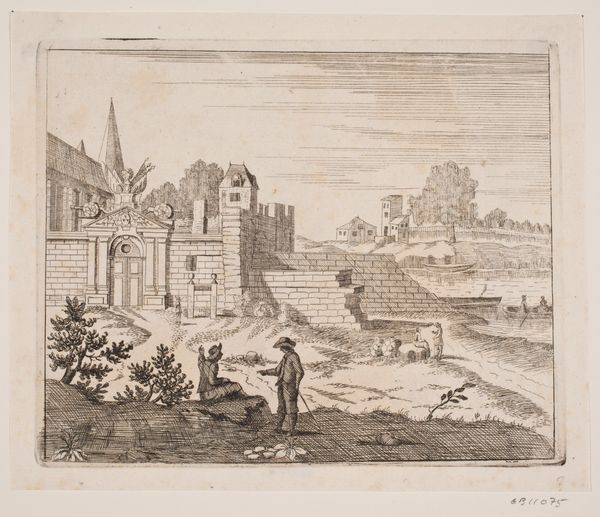
Tuin met brokstukken van antieke beelden c. 1561 - 1600
0:00
0:00
print, engraving
# print
#
landscape
#
11_renaissance
#
ancient-mediterranean
#
academic-art
#
engraving
Dimensions: height 240 mm, width 329 mm
Copyright: Rijks Museum: Open Domain
This etching of a garden with fragments of antique statues was made by Johannes or Lucas van Doetechum. The image presents us with a specific kind of space: a garden for displaying broken sculptures. It invites questions about how people in the past collected and displayed art, and what value they placed on ancient artifacts. The print was made in the Netherlands, but it depicts Rome. The broken statues and crumbling architecture tell a story of the city's decline. At the same time, the presence of people tending to the ruins suggests an effort to preserve the past. This image reflects the 16th-century European fascination with classical antiquity, and the growing art market for antiquities. To understand this image better, we might look to archival records that tell us about the gardens of wealthy Romans. What was the intended effect of displaying these sculptures? What did these collections mean to their owners, and to the public who viewed them? Through social and institutional history, we can deepen our understanding of this etching, and its place in the history of art and collecting.
Comments
No comments
Be the first to comment and join the conversation on the ultimate creative platform.
